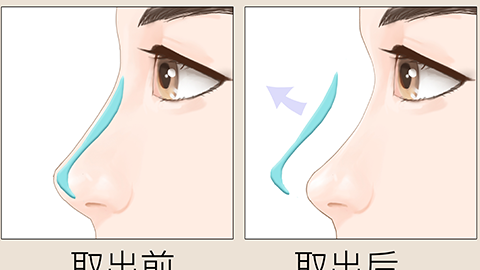How to make a big nose smaller
Generally speaking, a large nose may be related to factors such as heredity, bad habits, trauma, deviated nasal septum, and sinusitis. It can be reduced through makeup modification, implant surgery, comprehensive nasal surgery, septoplasty, or medication. It is recommended to visit a hospital to determine the exact cause and follow medical advice for treatment. The detailed analysis is as follows:

1. Genetic Factors
A large nose might be related to family heredity. If one or both parents have large noses, their children may also inherit this feature. Makeup is a quick and effective temporary method to adjust the appearance of nose size. In daily life, contouring powder slightly darker than skin tone can be applied on both sides of the nasal root to create shadows, making the nasal root appear deeper and achieving a visual effect of a smaller nose.
2. Bad Habits
Bad habits such as frequently picking or rubbing the nose may cause the alae nasi (nostrils) to become enlarged. It is recommended to correct these bad habits and avoid picking the nose frequently to reduce irritation to the nostril area. If nasal development is abnormal, implant surgery may be considered when necessary. By implanting suitable prosthetic materials into the nose, the nasal bridge can be elevated and straightened, thus improving the overall appearance of the nose.
3. Trauma
External impact or injury to the nose may cause soft tissue swelling, making the nose appear larger. If swelling occurs after nasal trauma, prompt medical attention is needed to determine whether there is a fracture. If trauma leads to nasal bone fractures or deformities, comprehensive nasal surgery can be considered for correction. Comprehensive nasal surgery involves surgical adjustments to multiple areas such as the nasal bridge, alae nasi, and nasal tip to achieve an overall improvement in nasal appearance.
4. Deviated Nasal Septum
A deviated nasal septum may cause abnormal nasal cavity structure, making the nose appear asymmetrical or larger. If it affects breathing or appearance, septoplasty can be considered for correction. This surgery aims to improve nasal breathing function and may also improve the appearance of the nose.
5. Sinusitis
Sinusitis is an inflammatory disease of the nasal sinus mucosa; long-term chronic sinusitis may lead to nasal mucosal hyperplasia and hypertrophy of the nasal turbinates, making the nose appear larger. Sinusitis may be accompanied by symptoms such as nasal congestion, facial pain, and headache. At this stage, active anti-inflammatory treatment should be carried out to control the progression of the condition. Patients can follow medical advice to use medications such as Tongqiao Biyan tablets,赛洛唑啉 nasal spray (Xylometazoline nasal spray), Cefixime capsules, etc., for treatment.
After surgery, it is also important to rest adequately and avoid strenuous physical activity to prevent interference with the recovery process.







